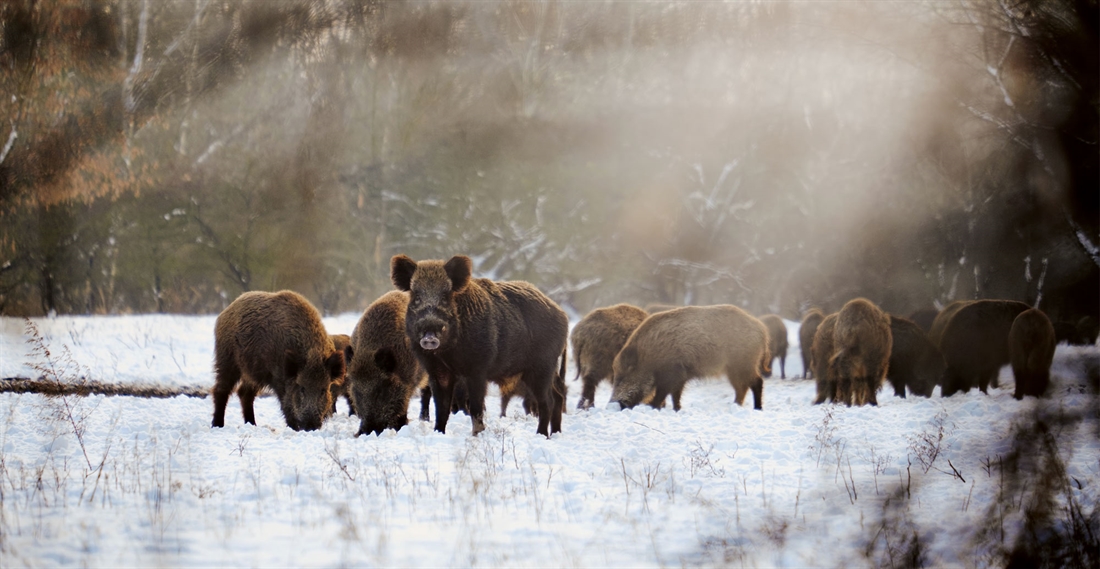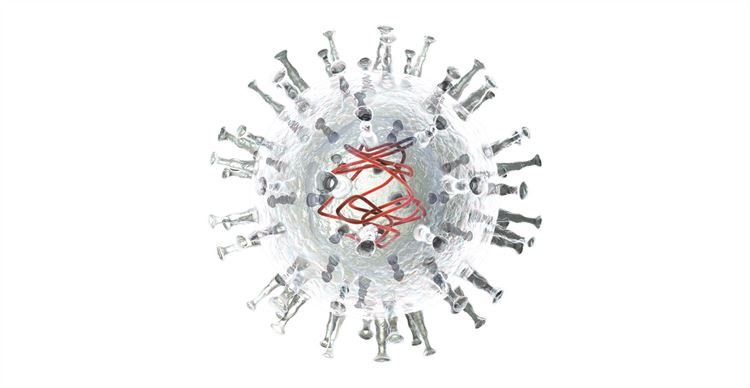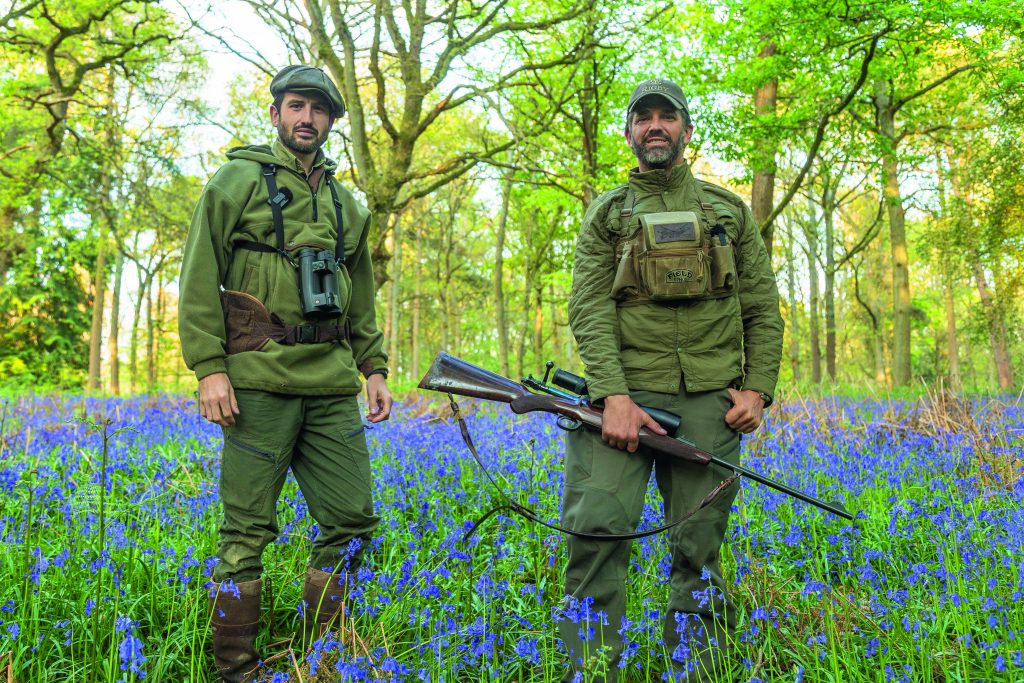African swine fever
A compilation of facts and figures.

Farmers, hunters and authorities are worried: African Swine Fever (ASF) has arrived in Western Europe and poses a great threat to many presently unaffected countries. It afflicts wild boar but also domestic pigs and can easily be transferred – a discarded sausage is enough. A possible outbreak can have disastrous consequences. Coordinated measures for prevention as well as control in the epidemic case are absolutely necessary to master the situation. Hunters play a key role.
What is swine fever and where did it come from?
ASF is a devastating – usually fatal – infectious disease found in pigs and wild boar (Sus scrofa). So far, no vaccine exists to combat this virus. It does not affect humans, nor does it affect other animal species. It can be transmitted either via direct animal contact or via dissemination of contaminated food (e.g. sausages or uncooked meat). An epidemic can have negative consequences for farmers, the economy and wild boar populations.
The term ‘swine fever’ refers to two different virus-related animal diseases: Classical Swine Fever (CSF, also sometimes called hog cholera or pig plague); and ASF. Despite similar symptoms, the two pathogens are not closely related. Both viral diseases can affect pigs of all ages. They are contagious and run feverishly. Domestic pigs and wild boar are equally susceptible to the diseases and can infect each other. Neither disease is transmissible to humans.
ASF is usually transmitted in African countries by soft ticks (Ornithodoros spp.), and occurs naturally in African wild boar species such as the common warthog (Phacochoerus africanus), the bushpig (Potamochoerus larvatus) or the giant forest hog (Hylochoerus meinertzhageni), occurring in the sub-Saharan region.
Outside of Africa, the plague (of the less aggressive genotype I) sporadically emerged in several Western and Southern European countries in the second half of the 20th century. These were most likely outbreaks due to contaminated food as the infections occurred mostly around harbours and airports. Except for the spread to Sardinia in 1978, however, it was possible to eradicate the disease several times. In 2007, the genotype II virus reached the sea route to Georgia via contaminated foodstuffs and spread from there along the main routes to the countries of the Caucasus. From the Caucasus, the virus bridged long distances to the Baltics and Poland, and more recently to the Czech Republic (2017) and Belgium (2018).
The transmission path
Soft ticks play no role as transmitters in Central and Eastern Europe. Instead this takes place either by direct contact with infected animals via bodily secretions (including blood, urine, semen and nasal secretions) or the uptake of infected food waste or pork products and other indirect transmission routes (vehicles, contaminated equipment such as hunting gear, but also agricultural equipment, machinery and clothes). Furthermore, animals that die from ASF are a source of infection, especially in wild boar populations. However, contaminated meat waste and pathogen-containing food are of greatest importance. In all likelihood, the erratic outbreaks in the past two years have been food related.
ASF spreads slowly within a group, but nearly all infected animals die from the virus. The contact with blood has the highest infection efficiency; the incubation time is typically 5–15 days, and in exceptional cases can be up to 40 days.
Symptoms
After infection with the highly virulent type of ASF found in Eastern Europe (genotype II), animals develop severe but nonspecific general symptoms such as high fever, shortness of breath, apathy and diarrhoea. A sudden death without previous symptoms is possible. The death occurs after approximately 6–10 days. The total mortality rate is almost 100 per cent.
Externally, infected animals can show no visible changes. This is in contrast to the internal organs: swelling and browning of the lymph nodes can be found; changes in the gastric lymph node are typical; swelling of the spleen, pinhead-sized bleedings on various organs and foam-filled lungs and respiratory tracts can also often be observed. Indeed, hunters can play an important role in recognising ASF when gralloching the hunted animal and looking at the internal organs.
Animals of both sexes and all age groups can be affected. In a hunting situation, affected animals may stand out
due to a reduced readiness to flee (for example, staying in cover under hunting pressure), behavioural problems such as lack of movement or disorientation, weakness and movement disorders.
In endemic areas, the progressive form is rather subacute with less severe symptoms, and only a laboratory diagnosis can bring certain knowledge and differentiate ASF from CSF.
The virus is very resistant to environmental influences. For example, its survival time in the carcass at 4–8°C is up to 7 months, in Parma ham up to 399 days, and in blood-contaminated soil up to 205 days.
Current distribution
The risk of an epidemic in Germany and other presently unaffected countries has risen significantly due to the recent events in Eastern Europe and Belgium as well as its wide geographical spread. Originally, ASF was limited to sub-Saharan Africa. So far, there is no evidence of the occurrence of ASF in Germany, however, there have been outbreaks in Belgium. The virus was introduced in June 2007 from Georgia to Armenia, Azerbaijan and then to the Russian Federation. From the Russian Federation, it spread to the Ukraine (domestic pigs and wild boar) and to Belarus (domestic pigs from small-scale farms – the situation with wild boar unknown). In the middle of June 2013, cases were reported near the Polish EU border. Then, at the end of January 2014, the virus first appeared in Lithuania, in two regions on the Belarusian border. A year later, Poland reported a case of ASF in a wild boar, and Latvia and Estonia also reported the appearance of ASF. The Czech Republic reported the first ASF cases in wild boar in the border region with Slovakia at the end of June 2017. At the end of November 2017, two dead wild boar were found infected with ASF north of Poland.
In its spread, ASF has skipped over several countries and arrived in Western Europe. In September 2018, it was detected in wild boar in Belgium. The animals were found dead or killed in the area in the border triangle of Belgium, France, and Luxembourg. Within a short time, all domestic pigs were culled within the infection zone and since the outbreak, about 250 dead boar have been found, of which to date 135 animals were infected with ASF. Evidence has also increased in those countries with previously confirmed ASF outbreaks. An exception here is the Czech Republic, which, after brave action since mid-April 2018 (the construction of a kilometre-long electric fence, increased hunting, and monitoring efforts), has not recorded any further cases of infected wild boar. In addition to Belgium, ASF has also arrived in Hungary and Bulgaria. In the latter, there was also proof with domestic pigs, and in Romania the situation is striking with very high numbers of infected domestic pigs.
The potential for propagation over greater distances, as has been the case in the past in the Czech Republic and Poland, increases the risk of introduction into Germany or other countries including islands such as Great Britain or Ireland. This situation is made all the more concerning by the current 135 reported cases of ASF reported in Belgium.
Measures for disease prevention and control
The distribution of ASF amongst wild boar in Eastern Europe shows that the virus spreads slowly and steadily, bound to the habitat. Its distribution is not exclusively density-dependent, as the transmission is characterised by a contact mix between pig/pig and pig/dead game. A lowering of the population after an outbreak, therefore, does not necessarily lead to a disappearance of ASF, because it is unlikely that all infected fallen game will be found and removed from the wild. Nevertheless, lowering wild boar densities can lower the likelihood of infection; according to mathematical models, a reduction of more than 70 per cent is required to prevent the spread of ASF. The Friedrich-Loeffler-Institut (FLI) recommends a reduction of at least 80–90 per cent. Whether a reduction of this magnitude is realistic is questionable.
Basically, wild boar populations, which have risen enormously in recent years, are in greater need of intensified hunting than in the past. The clear developments of the pan-European hunting bags of the past decades are a good indicator that the increase in wild boar has not been skimmed off for many years by hunting. On the contrary, the population grows steadily. The number of boar which die from natural causes and the development of crop damage also point to this trend.
However, for a reduction to succeed, a stronger communication between all stakeholders involved is necessary. Only a well-functioning communication base, mutual trust, a high level of commitment of all stakeholders and a high level of voluntary contribution will lead to the control of this animal disease in the event of an outbreak of ASF.
The examination of boar which are found dead is an important pillar of standardised surveillance. In the context of a possible outbreak of ASF in the wild boar population of the EU, early detection should be intensified accordingly. The finding of a dead animal (with an undetectable cause of death) must be reported immediately to the competent authority, usually the veterinary office.
Since there is no vaccine against ASF, prevention and measures to improve chances of early detection are key. As the virus is considered to be spread in particular via contaminated food and food waste, the transport of meat and milk from non-EU countries is prohibited. Also, ‘home-made’ wild boar products in the affected countries should be avoided. The resistant virus persists for a very long time in chilled, smoked meat. Such products (including processed foods such as sausages) must under no circumstances be brought into the EU. Care must also be taken to ensure that these products do not enter the wild boar population at free availability for the animals, such as when disposing of leftovers at the motorway rest area.
When hunting in countries already affected by ASF, hunters should make sure that clothes, equipment, and vehicles are disinfected accordingly. In particular, pig farmers who are also hunters should use consistent hygiene and biosecurity measures.
In the case of an outbreak
Hunting and disease control (culling) are two pairs of shoes. Therefore, it is important to strictly distinguish between regular hunting practice and epidemic control. Since there will be no vaccine against the ASF in the foreseeable future, the necessary control measures will be aimed at preventing the spread through the interruption of the infection chain. In the event of an outbreak, this means a maximum possible reduction of the wild boar population in a given area, which comes close to an eradication scenario. The goal is then no longer an adaptation of the populations to social needs (e.g. damage control), but a massive reduction. In the event of a disease case, hunting ethics and the self-image of hunters will be on trial, as in epidemic times measures have to be taken which can neither take into account fostering wild boar nor consider social structures. In this epizootic disease, all other objectives, including the high animal welfare standards, will be subordinated. Closed seasons and other legal restrictions will be reviewed and, in the case of an epidemic, might be cancelled by the competent authorities, subject to the disease legislation.
The proposed measures are therefore not to be classified as different forms of hunting, but decidedly as disease-hygiene measures, in order to contain disease events as fast as possible. There is no doubt hunters will have to find and define their place in a modern wildlife management scenario but also fight for their ethical needs.
What next?
The EU has developed an African Swine Fever Strategy and a solid legislative framework to help control and eradicate ASF. This strategy includes specific regionalisation measures which are focused on control measures and prevention of the spread of the disease (in order to protect disease-free areas in the EU) requiring hunters’ cooperation among other things. This is based on science as provided by the European Food Safety Authority.
Since 2013, the EU has allocated a total of €95million for the prevention and eradication of the disease, which includes €48million for eradication programmes and €47million for emergency measures. The EU ensures the coordination work with the member states and is working with eastern neighbours.
In December 2018, a ministerial conference was organised by the European Commission on the ‘Eradication of African Swine Fever (ASF) in the EU and the long-term management of wild boar populations’. The concluding statement can be found online. Measures and recommendations for EU hunters in the prevention and management of ASF can be found here.
Related Articles
Get the latest news delivered direct to your door
Subscribe to Fieldsports Journal
Elevate your experience in the field with a subscription to Fieldsports Journal, the premium publication for passionate country sports enthusiasts. This bi-monthly journal delivers unparalleled coverage of game shooting, fishing and big game across the UK and beyond.
Each issue offers a stunning collection of in-depth features, expert opinions and world-class photography, all presented in a timeless yet contemporary design.
Save 10% on shop price when you subscribe, with a choice of packages that work for you. Choose from Print & Digital or Digital only with each journal delivered directly to your door or via the app every other month, plus access to past issues with the digital back issue library.








